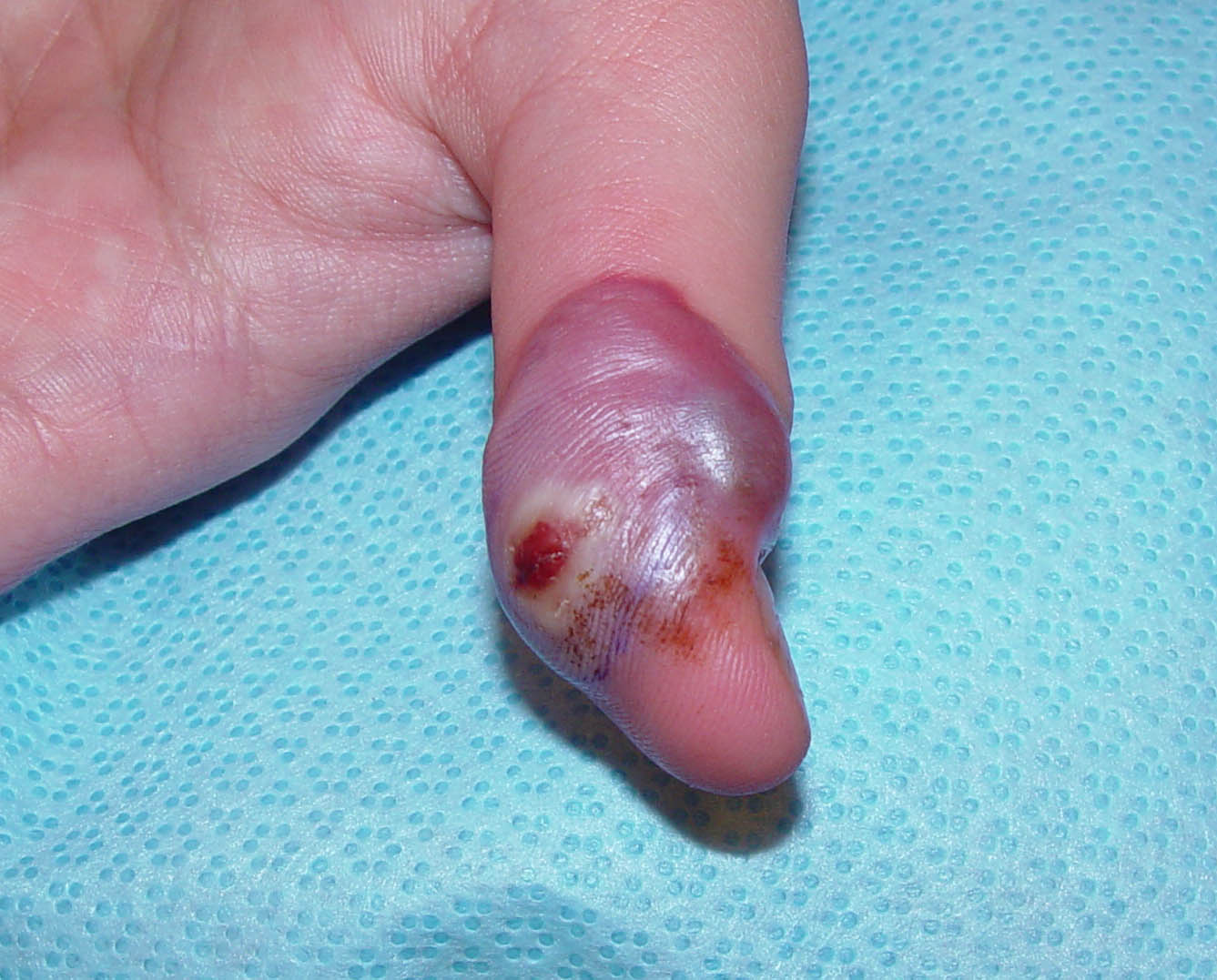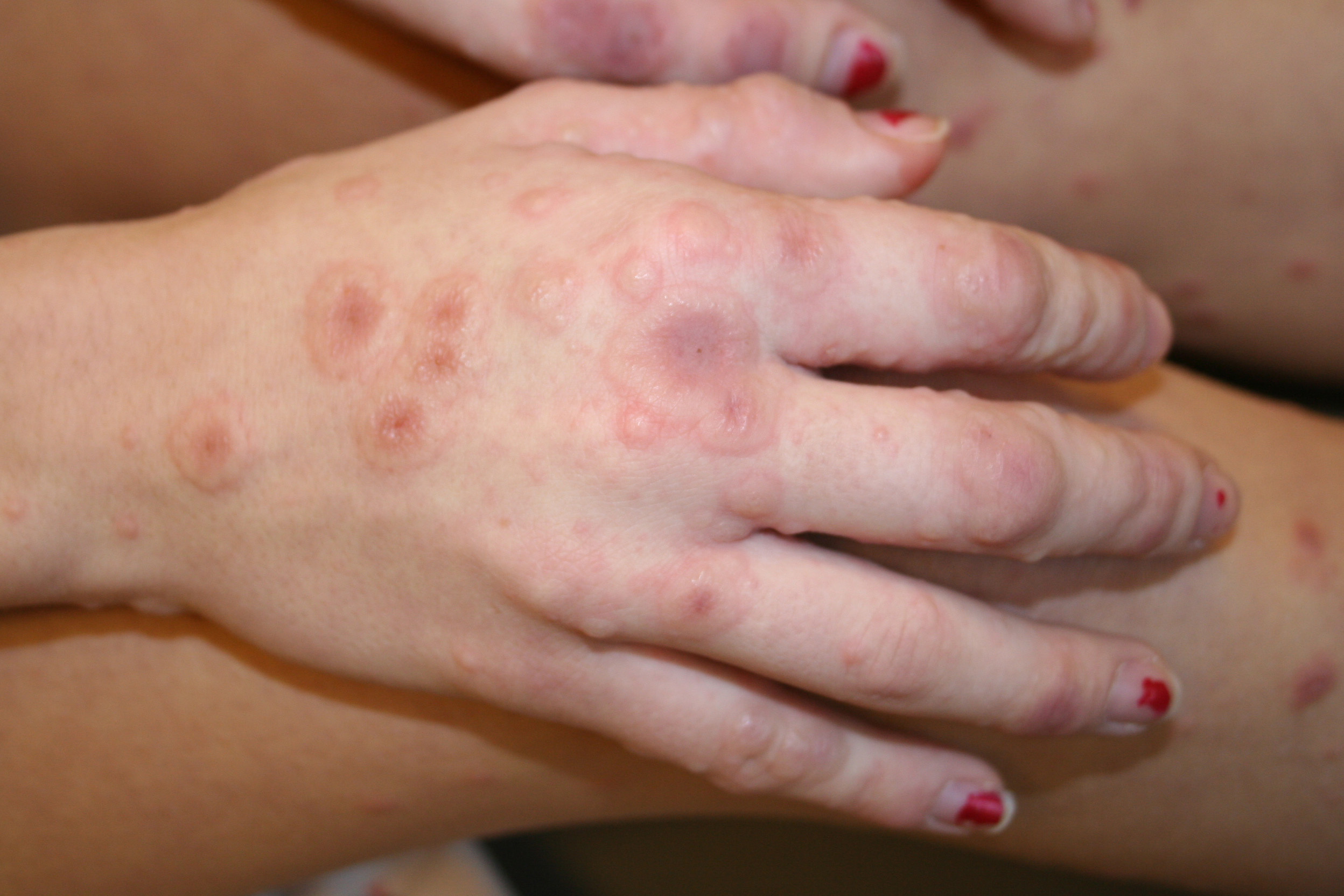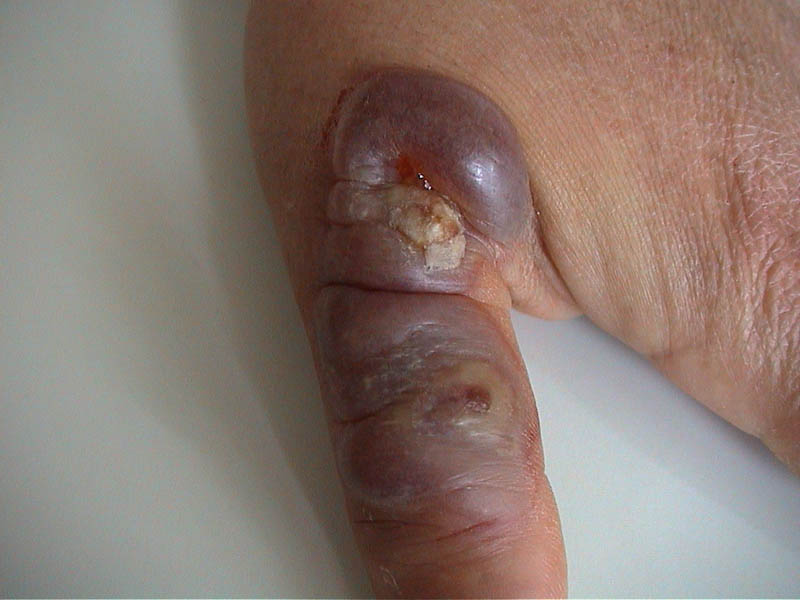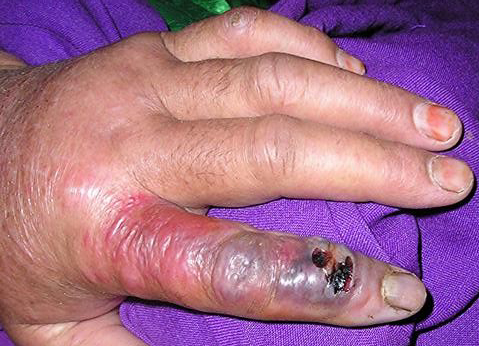Additional Information about Sore Mouth in Humans
Orf Information Humans.doc
National Animal Health Monitoring System; Goat 2019 Study
Additional Information about Sore Mouth in Humans
OMB: 0579-0354
Additional
Information About
Sore
Mouth In Humans
What
is “sore mouth”
(contagious
ecthyma, orf)? “Sore
mouth,” also called “scabby mouth” and “contagious
ecythma” is a viral infection of goats and sheep, caused by a
poxvirus (orf virus). Orf virus is found throughout the world.
Can
people become infected with orf virus (the virus that causes Sore
Mouth)? Yes,
people can become infected with orf virus.
Animals
infected with orf virus typically have sores in their mouth, or on
their muzzle, lower legs, or teats. Activities such as bottle / tube
feeding, shearing, petting, or being bitten by an infected animal
(or touching contaminated equipment) can increase a person’s
chances of becoming infected with orf virus.
A)
Orf lesion, B) erythema multiforme rash, C) characteristic
bull’s-eye rash caused by lyme disease. These three illnesses
are all associated with skin lesions presenting with a target-type
appearance, however, a lyme disease-associated rash will remain
typically flat (macular), and an erythema multiforme rash (due to
allergic reaction) will often develop at multiple sites on the body,
while an infection with orf will typically cause 1-2 raised lesions
on the hands or forearms. A
& B: Courtesy of D. Kouba, MD and B. Cohen, MD, DermAtlas
(http://www.dermatlas.org);
C: Courtesy of J. Gathany, CDC.
What
are the clinical signs of orf virus infection in humans? Infection
with orf virus is usually confined to the epidermis (top layer) of
the skin. Lesions will often occur on the fingers, hands, or the
forearms.
Orf
lesions typically progress as follows:
Maculopapular
stage (days 1-7) –
Flat
or raised discolored lesion
Target
stage (days 7 – 14) –
Red
center surrounded by a white halo further surrounded by a red halo
Acute
stage (days 14 – 21) – Disappearance of normal looking
skin at the lesion site
Regenerative
stage (days 21 – 28) – Regenerating of normal skin
(epidermis)
Papilloma
stage (days 28 – 35) –
Raised
epidermal lesion
Regressive
stage (days 35+) –
Skin
returns to its normal appearance, often without scarring The
size of orf lesions generally range from 2-3 cm but can be as large
as 5 cm. Lesions may be painful and associated with nearby swelling
of lymph nodes.
Persons
with a compromised immune system (e.g., HIV, lupus, cancer) can
develop a serious illness, including large tumor-like lesions,
progressive disease, development of multiple lesions, or erythema
multiforme reactions involving rashes on the mucous membranes and
skin.
Can
I get sore mouth more than one time? Yes.
Immunity against infection with orf virus is short lived; therefore
people can be infected multiple times throughout their life.
Lesions, after re-infection, are typically smaller and resolve
sooner.
A
B
C





Should
I seek medical attention if i think i have become infected with orf
virus? A
number of infectious agents can be transmitted from goats to humans.
Some may even resemble orf in appearance but may cause a more
serious disease. One such agent is anthrax, which can cause lethal
disease in goats. You
should seek medical attention if:
You
notice a lesion(s) that you cannot explain – macule, papule,
vesicle, or pustule – or the lesion is becoming rapidly
larger, AND
You’ve
had contact with goats or objects that have been in contact with
goats 1-2 weeks prior to the time the lesion developed, WITH
or WITHOUT
The
presence of a low grade fever lasting a few days, mild
lympadenopathy (swollen lymph nodes) or lympangitis (red streaking
at infection site)
Orf
lesion after exposure to infected ewes. Image
courtesy of C. Verros, MD, DermAtlas (http://www.dermatlas.org)
Cutaneous
anthrax (caused by the bacteria Bacillus
anthracis)
lesion after contact with sheep. Image
courtesy of A. Khan, MD, DermAtlas (http://www.dermatlas.org)
Are
there any laboratory tests to diagnose orf virus infections in
humans? Currently,
the Centers for Disease Control and Prevention (CDC) has a specific
laboratory test that can detect sore mouth in humans. Specimens
must be submitted for testing through a doctor or health department.
For more
information on sore mouth in humans please contact you physician or
health department or visit http://www.cdc.gov/ncidod/dvrd/orf_virus/
For more
information regarding CDC’s diagnostic testing, please call
(404) 639 ─ 4129.
What
information should I bring with me to the doctor? If
you seek medical care for your lesion(s) please bring along this
information sheet. While knowledge of sore mouth may be common among
farmers and veterinarians, orf is a relatively rare infection of
people.
If
you have been vaccinating your goats with the live virus orf
vaccine, please alert your health care provider and have the brand
and lot number handy. How
should I care for my lesion? The
lesion should be kept dry and covered to prevent a secondary
infection with bacteria. While working with animals or during
manual labor in which the lesion might get wet a water tight bandage
should be used. To promote healing a non-weeping lesion can be
uncovered at bedtime or covered loosely if still weeping. Consult
your physician for additional information on would care.





| File Type | application/msword |
| Author | wfd6 |
| Last Modified By | SYSTEM |
| File Modified | 2019-02-22 |
| File Created | 2019-02-22 |
© 2025 OMB.report | Privacy Policy